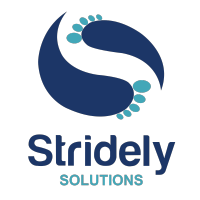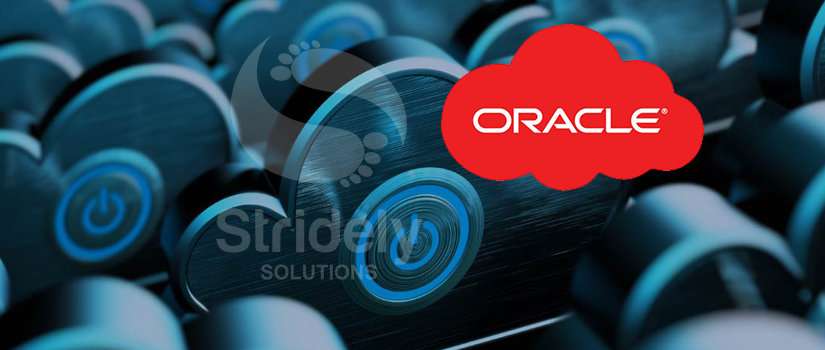Long gone are the days when you had to install hardware or software within your premises to run a solution. With the advent of advanced technologies, the face of business operations has changed and so do the way applications are used.
Meaning that if you wish to employ some kind of enterprise application within your business, no longer would you need to hire a developer, build the app and then deploy it in your system. With cloud computing, you can easily lease an existing application of the same kind, and customize it to meet your needs. Alternatively, cloud solutions facilitate hosting one or more of your business applications/data over the cloud.
This ensures that either of them is available for interrupted access (anywhere, anytime). This is where we bring in the idea of migrating JDE to the Oracle cloud.
Also Read: JDE Worldsoft to JDE Enterprise One 9.2 – The Benefits of Migration and Step-by-Step Process to Migration
Why Oracle Cloud?
The all-new Oracle Cloud ERP is a comprehensive suite of solutions that empowers the existing JD Edwards with financial flexibility. Besides, it is equipped with the innovation needed to regulate business processes and adapting oneself to change. Experts suggest that Oracle Cloud ERP has the potential to transform the existing solution offering agility and resilience. In one way, organizations moving their JDE infrastructure to Oracle cloud position themselves for growth. From innovation to cost reduction, simplifying access, and making predictions, the cloud-backed solution encompasses all.
Advantages of moving to Oracle Cloud
The primary benefits of migrating to the Oracle cloud infrastructure include:
- Rapid deployment: The first and the most important advantage of the migration to the Oracle cloud is the ease of deployment. Unlike other deployment solutions, the one with Oracle cloud is quick and you can get a functional system within hours/weeks.
- Greater business agility: Enabling businesses to speed up the time to market while reducing the total time taken to build new business lines and further acquire new businesses within the company.
- Efficient use of resources: Resource wastage is one of the things enterprises fail to optimize. With Oracle Cloud, you have the flexibility to eliminate the same, releasing all of the limited IT resources. This helps focus on improving your business decisions rather than working on the improvement of infrastructure on an everyday basis.
- Minimal capital expenses: The fact that Oracle cloud is hosted over the web and is purchased in the form of subscription services, you now have the ease to pay for resources that you use. This in a way reduces the overall expenditure.
Oracle Cloud Service Layers – Choices and Benefits
Having said the above, you might be fascinated and want to make the move. But before making the call and having your JD Edwards infrastructure lifted and shifted to the Oracle cloud ecosystem, you need to know the different service layers of Oracle Cloud.
An important thing to note here is that JD Edwards EnterpriseOne customers will have the freedom to pick from any of the conventional cloud service layers as we are to discuss in the coming sections. Besides, they can continue to reap the benefits of their existing product license, processes, customizations, training, configurations, and data.
That is to say, the existing users have the ease to merge the existing on-premise solutions with Oracle cloud services at all of its layers. Now the said method will have one or more combinations depending on the end to end requirements. Meaning that you have the choice as well as the control on how can you leverage the cloud services at any of the cloud service layers, helping you with your digital business.
Optimizing JD Edwards EnterpriseOne with Oracle IaaS
When figuring out ways to move your JDE to the Oracle Cloud, Oracle IaaS is one of the cloud service layers that will provide total support towards your JD Edwards solution. What you need to do is run your JD Edwards on the Oracle IaaS service layer and at the same time manage and control your applications as well as the database of JD Edwards EnterpriseOne.
Oracle Cloud offers the network services, the compute services, and the storage required to run your enterprise application. Compute services are designed to implement changes and accommodate them as per the needs of the business. This can be then provisioned on both dedicated as well as multi-tenant resources.
Further, the storage services render a scalable and secured storage capacity, shared file storage, and a storage archive. Next, the network services offer a secure and fast connection interface allowing you to move your data center to the Oracle Cloud platform.
Optimizing JD Edwards EnterpriseOne with Oracle PaaS
Oracle PaaS has an array of integrated cloud services that renders support to application management, IT operations management, data management, mobility, integration, visual analytics, and content. The primary reason why PaaS services are used is that it helps extend the functionality of JD Edwards EnterpriseOne
Optimizing JD Edwards EnterpriseOne with Oracle SaaS
You can also implement your JD Edwards EnterpriseOne solution in the form of Oracle SaaS applications. This renders additional features to your business in terms of best-in-class functional capabilities. This adds to the existing ERP system of JD Edwards and induces innovation to deploy Oracle cloud. Core features include:
- Oracle Transportation Management Cloud
- Global Trade Management Cloud
- Procurement Cloud
- Project Portfolio Management Cloud
- Product Lifecycle Management Cloud
- CX Cloud and HCM Cloud
Conclusion
Evaluate each of these to find what type of deployment will benefit your business the most. An important thing to take note of is that irrespective of whether you plan to stick to the on-premise architecture of JDE or happily move it to the Oracle cloud platform, the licensing will be the same. And if you have an existing JDE EnterpriseOne solution and you wish to move it to the cloud infrastructure, you will not have to pay any additional fee for the same. However, you will have to pay for the Oracle Cloud subscription for IaaS services: compute, storage, and network. Get in touch with us at Stridely Solutions to know more.


